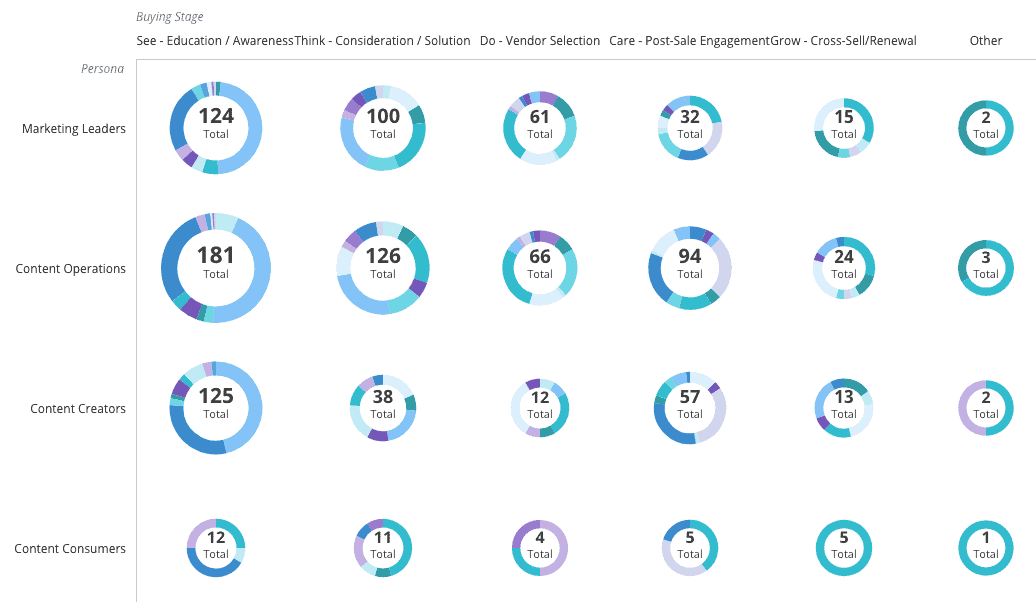You did it. You’ve stepped above the tactical “write all the things” and “click all the buttons to launch right now,” and you’re ready to take on that strategic role that you’ve been eyeing for years. But what do you actually do? When my friends and family ask me what my role as Kapost’s Director of Content entails, I tell them it’s a lot of cat herding and word nerding, but that doesn’t begin to define what it means to be successful in a new marketing leadership role.
Until now. It’s a short list, but I found that with all the other new responsibilities and fire extinguishing I did in my first year as a marketing director, focusing on three primary goals made for a happy (and successful) marketing team.
Objective One: Clean Out the Closets
Whether you are new to an organization or not, your first task as a director is to familiarize yourself with your inventory. Before you assert yourself as a thought leader and change maker, you have to know your marketing assets like your closet.
There are always the shirts, pants, and shoes you keep front and center, and everyone agrees they are fine. They work. But they’re looking a bit worn, and you need that exciting something to get the process moving in a new way. Where are the hidden gems? Where is that fabulous seersucker blazer you bought years ago and never wore again?
Finding such gems can be as easy as filling out a spreadsheet with each of your assets and mapping them. Are you currently delivering the right content (pain points you’re trying to solve) to the right person (your target buyer personas) at the right time (your buying stages)? You’ll be amazed to find these forgotten assets that just need a bit of polish.
| Asset Inventory | Right Content | Right Person | Right Time |
| Super Blog Post | Pain Point 1 | Persona A | Awareness |
| Awesome eBook | Pain Point 2 | Persona B | Consideration |
| Fabulous Webinar | Pain Point 3 | Persona C | Evaluation |
Add as many columns as you like to cover additional contexts like region, theme, channel, etc. The key is to get buy-in from other departments on this project. Find out what the sales, customer success, demand gen, and product teams are actually using on the day to day. Come together to agree on taxonomy. With all this input, you will see the gaps in coverage.
My team is lucky enough, of course, to use Kapost, so our inventory is as simple as checking out—you guessed it—our Inventory Board. And since we tag every asset and initiative, we can see exactly what content we have for each customer at every stage of their lifecycle and, in a flash, prioritize where we know we need more coverage.


Objective Two: Rally the Troops
It may sound odd to advise adding another meeting to everyone’s calendar, but this is one they will love: the editorial board meeting.
Gather representatives from each department and let them sound off. What are their greatest achievements, biggest pain points, or craziest ideas? As a marketing director, you don’t have to come up with every marketing idea on your own; some of the best projects I’ve worked on have come from folks who’ve never written a blog post in their life.
I like to start with the retrospective achievements and pain points then move to the crazy ideas as a separate agenda item. Find what works for your people, but my coworkers love sticky notes. Some folks aren’t comfortable voicing a novel idea, but writing it down and sticking it up on a board is sometimes a bit less scary.
(Here comes the Kapost plug!) I get tons of amazing ideas across my entire company via Kapost’s Idea Queue. Anyone can submit a content idea, and the editorial board can easily approve and sort these ideas into planned initiatives. We use the agreed upon tagging system to ensure that all asset requests are in line with strategic priorities, are consistent with company messaging, and cover the gaps that need attention.
Creating a formal editorial board gives voice to each department in your organization and builds empathy across teams. We all have priorities, and often we need to hear more from the other sides to align our priorities to the great goal.
Objective Three: Limit Your Data Diet
It’s tempting to indulge in the smorgasbord of data within even small marketing organizations, but you have to restrain yourself. You can spend all day, every day diving down the rabbit holes of email open rates, blog CTA conversions, and newsletter A/B test statistics—but don’t do it! In line with objective two, a part of rallying the troops is letting each person run the data show for their own universe. They own the content; let them own the detail data so you can focus on the bigger data: MQLs, SALs, SQLs, and Opportunities.
Once you have a solid funnel spreadsheet/dashboard in place, bring in the team to identify what marketing initiatives and assets are working (back to objective two!) and find opportunities for future initiatives.
The Key Takeaway
Know your inventory, know your team, and know your data. Only then can you pull out that journal of “Best Ideas Ever” you’ve been squirreling away for years and begin to make real change for the better.
What are your top priorities and greatest challenges as a new marketing leader? Connect with me at @Paralee or linkedin.com/in/paraleewalls and share how you’re making your mark.


